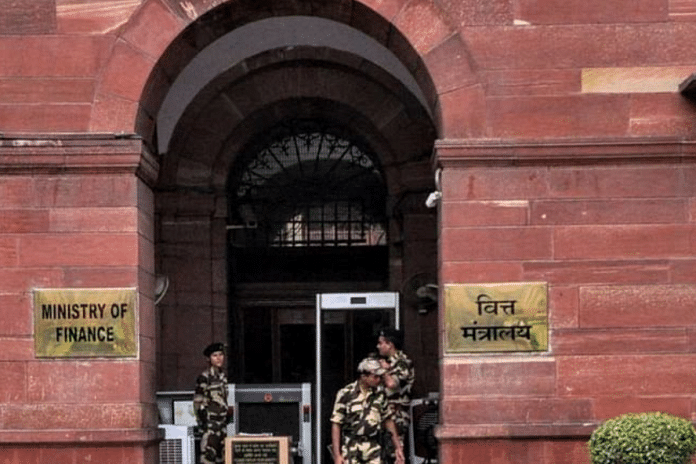The debates around the question of horizontal devolution of taxes have made a comeback, especially due to the stress on the finances of the state governments during the Covid pandemic. Undoubtedly, it is imperative to distribute resources in a federal structure to foster nation-building by synchronising the expenditure requirements, fairness, and states’ performance. Rich states are inevitably and rightfully expected to contribute more to the resource kitty. However, how can we rationalise the redistribution of funds from poor districts of affluent states to support other states? The current horizontal devolution of pooled funds does exactly that. This question becomes increasingly pertinent in the context of the growing intra-state disparities in India.
Consider Karnataka, which is the wealthiest state in India in terms of income per person. While it has the highest per capita income, it is also home to some of the poorest districts in Southern India. It is difficult to justify why Karnataka receives one of the smallest portions of tax revenue allocated by the 15th Finance Commission (FFC) just because some districts in the state are amongst the richest in the country.
The principle that more revenue should be allocated to the poorer states for equitable growth is absolutely reasonable. However, evidence shows that some richer states have some of the poorest districts. Therefore, rather than redistributing taxes on the basis of state-level calculations, we should make methodological changes to reflect the district level calculations.
Also read: Why the south-vs-north debate is a flawed way to analyse the 15th finance commission formula
The imbalance at the core
The main reasoning behind redistribution is that wealthier regions can afford to provide essential public services at a lower tax rate compared to poorer regions. As a result, richer regions become more desirable investment destinations. Therefore, it would be incorrect to attribute all development to the efforts of individual states. Horizontal devolution based on equity attempts to correct the distortions created by market allocations.
However, as the amount of independent spending among states has grown since the vertical devolution has increased the share of states, the details of how tax resources are redistributed demand closer examination. In particular, within the FFC’s devolution formula, the equity criterion known as ‘income distance’ holds a weight of 45 per cent. The calculation is simple: The FFC ranks all states according to their per capita income and calculates the difference between each state and the one with the highest income. This per capita difference is then adjusted by the population to determine each state’s share. However, this process raises the following issues.
The first concern is that the calculation ignores intra-state inequality. The presence of a single economically productive region can have a significant impact on the mean income of a state. In Karnataka, it is Bengaluru; in Telangana, it is Hyderabad; and in Haryana, it is Gurugram. In a 2015 World Development journal article Remoteness, Urbanization, and India’s Unbalanced Growth, S Das, Chetan Ghate, and Peter Robertson argue that per-capita incomes across India’s districts are diverging rather than converging. Hence, addressing intra-state differences is as important as inter-state inequalities; but how can states like Karnataka or Haryana even attempt to address this issue when they have such a small share of the funding pool?
Secondly, the rationale behind using income distance in the devolution formula is that a state’s per capita income is indicative of its overall fiscal capacity. A high per capita income does not always equate to high fiscal capacity if income is concentrated in a small segment of the population. This phenomenon is well-documented and has been shown to have adverse effects on fiscal capacity in developing countries. The assumption that state governments can effectively address intra-state disparities due to a small number of economically concentrated regions is flawed. This could be one of the reasons for the divergence in the intra-state incomes, indicating no signs of convergence.
Also read: Kerala’s poor is UP’s rich — how access to basic services varies in Indian states
Change the formula
A potential solution for the next finance commission could be to modify the current method of using state-level per capita income data. Instead, district-level per capita income data could be used to rank all districts in India. Inter se shares could then be computed at the district level and subsequently aggregated at the state level for the distribution of funds. This modification would provide a more accurate representation of the economic conditions of different regions within a state, thereby enabling a more equitable redistribution of funds.
The purpose of modifying the devolution of taxes is to make a fairer comparison of poorer districts and regions, regardless of whether they are in a rich or poor state. Using district incomes would provide more detailed information and a more accurate representation of a state’s overall fiscal capacity.
Of course, one may wonder where one ends with this. Why not go at the sub-district level? To this, there is no satisfactory answer. However, that we can do better than state-level income measures seems relatively uncontentious. Given India’s size and complexity, using finer and more granular data is the most appropriate way to move forward.
Kishen Shastry is pursuing a PhD in Economics at the University of Cambridge. He is also a recipient of the Adam Smith Fellowship at the Mercatus Centre in George Mason University. He tweets @kskishen. Views are personal.
(Edited by Humra Laeeq)



